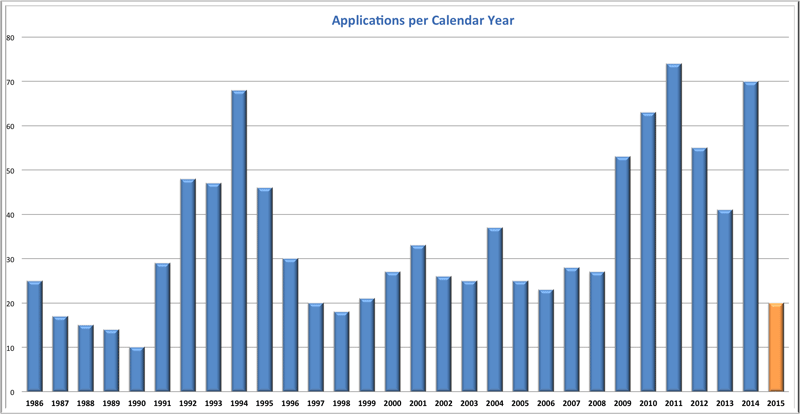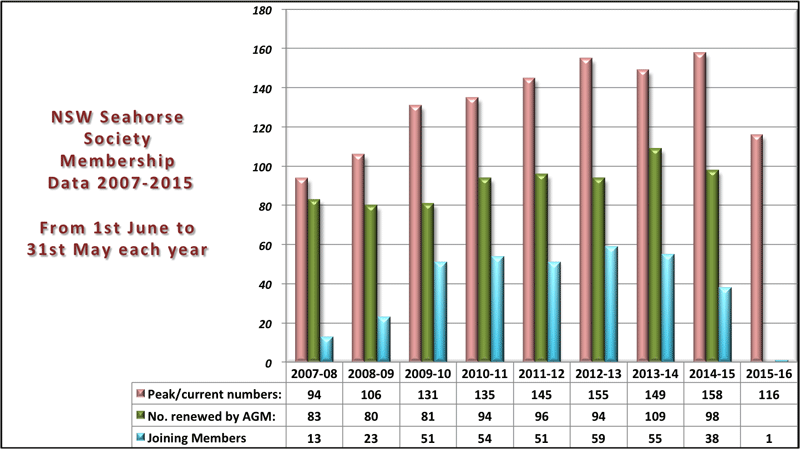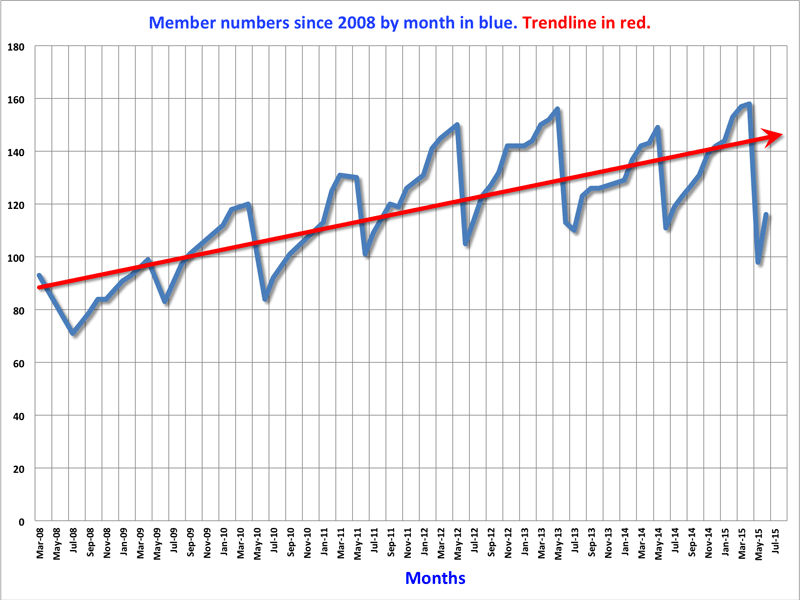Seahorse's History
The Definitive History of the Seahorse Society - Part 9
This page includes details of the modern-day Seahorse and its need to change with the times.
Seahorse's organisation
The running of Seahorse has always been by its elected Committee, which meets once a month. By the late 2000's, the Committee became a very organised and active group, with often twelve or more attending, many offering to help organise functions and run the various activities that Seahorse now offered its members.
In 2010, the Seahorse library, which had previously become inaccessible and outdated, was revitalized and became permanently housed in our meeting hall.
The processing of applications for membership has changed over the years. The days of a formal face-to-face interview with the committee, which must have been very anxiety-provoking for a prospective members, gradually gave way to an informal chat with a senior member (previously called a Big Sister) either at face-to-face meeting, or by telephone conversation, or, more frequently nowadays, by email discussion.
Seahorse 2012 and beyond
As of 2012, Seahorse has grown significantly over the last few years, helped by having an active website that also makes applying for membership much easier. While a proportion of new members do not renew after their first year, the overall membership numbers continue to grow steadily. It is gratifying to see past members rejoining, sometimes after many years of absence.
Attendance at monthly Social meetings has substantially increased from about 15 to 20 members in 2007, to at least 30 to 40 members, plus at least 4 or 5 partners.
The Seahorse Society's work has moved back to being much more focused on our primary aim, our members and their needs, but still acknowledging our secondary role by having connections with and supporting the wider trans-community.
Seahorse's financial state has become very secure in recent years, helped by a good income from the high numbers of membership subscriptions. The membership subscription has remained at $50 per year for many years. Having a secure financial position has allowed us to keep the price of our event tickets affordable.
Seahorse remains a very active growing organisation, attracting at 30-40 new members each year, but accepting that we will have a similar number who do not renew their membership for many different reasons.
For many of those who do join us, it is that first big, important step out of the closet. Some have criticized Seahorse as being "just another closet", but even it was simply that (which we do not believe it is), then even that is a big help for the many heavily closeted cross-dressers living in the community.
Some newer members may, in time, "out-grow" Seahorse, but many of these remain thankful that Seahorse gave them the courage to come out in the first place. Many of us stay on in the organisation to provide support, guidance and good example to new members, as we appreciate that given to us when we first joined and were finally able to have friends in the trans-community.
Despite some critics who have seen Seahorse as something of a dinosaur on the edge of extinction, the organisation continues to function well and has survived difficult times in the past, and is again growing in strength and respect from the wider community.
The Growth of Seahorse since 1985
After the devastating loss of all members' records in 1985, secure record keeping became a serious priority and subsequent
Membership Secretaries have been more diligent in keeping up-to-date and accurate records of all membership applications.
Number of applications each year
It has been possible to research old records to review trends in the number of applications to join Seahorse. The records were not always accurate enough or clear enough to be certain if an applicant completed their application, i.e. became a full and financial member, and more detailed research would be needed to clarify this.
The graph on the right shows the number of recorded applications to Seahorse in any calendar year. There two obvious peaks visible: 1992-1996 and 2009-2011.
The reason for the peak in 1992-1996 is not entirely clear, but this suggests very active promotion of Seahorse, after its incorporation, through various channels, probably mainly the Gender Centre, with whom Seahorse always has had strong ties. Another explanation could be the demise of the Flamingo Society, which folded in 1992, leading to many of their members joining or returning to Seahorse. The rapid drop-off in applications in the mid to late 1990's may reflect personality problems that were known to have existed with in the organisation at that time. This is followed by some recovery under new leadership.
The surge of applications beginning abruptly in 2009 coincides with the introduction of on-line membership applications, which rapidly became to preferred method of application.

Membership numbers
All organisations, and Seahorse is no exception, experience problems with member retention.
The graph shows that the rapid growth in membership numbers will usually mean a similar rapid drop in those not renewing their membership. However, there is usually a small net gain each year.
Financial members at the time of AGM (in pink)
The number of members who renewed their membership at the time of the AGM. (in green)
The number of new and rejoining members (in blue).

The second graph, below, shows the number of members recorded in all the available monthly committee meeting minutes since 2008. This shows the expected fluctuations of member numbers. The sudden dips are due to members who have not renewed by the end of May each year. Overall, the graph shows a good growth trend.
